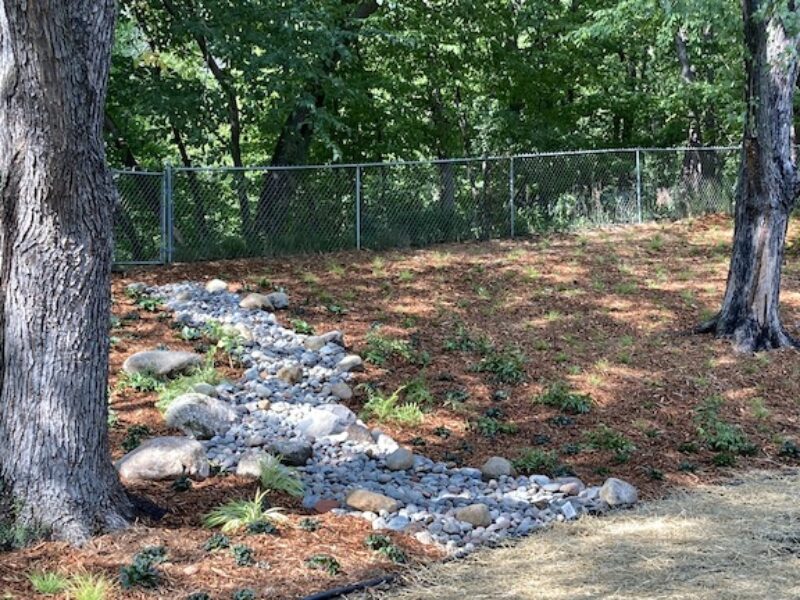
Maple trees can be wonderful denizens of the urban landscape, growing quickly to provide shade in the summer and glorious colors in the fall. But many home gardeners are challenged by what to plant underneath their maple tree. Horticulturist and native plant enthusiast David Pierson, of Pierson Garden and Landscape, provides some ideas below.
Planting under the urban maple. Bountiful gardens under a mature maple are rare due to the maple’s shallow roots, dense canopy, and excretions that hinder competing understory plants. While it’s difficult to find plants that thrive, here are some options for low-maintenance native plants that will grow under the urban maple tree.
Planting under the dense canopy of a maple
Hepatica Hepatica americana. Hepatica are adorable little pops of life that poke through last year’s leaf litter during early spring. They grow and bloom before dense trees like maples can fully leaf out, and can even survive in the gaps between the shallow roots of a maple tree. Although they are adorable, they do go dormant by mid-summer and they are difficult to find at common garden centers.
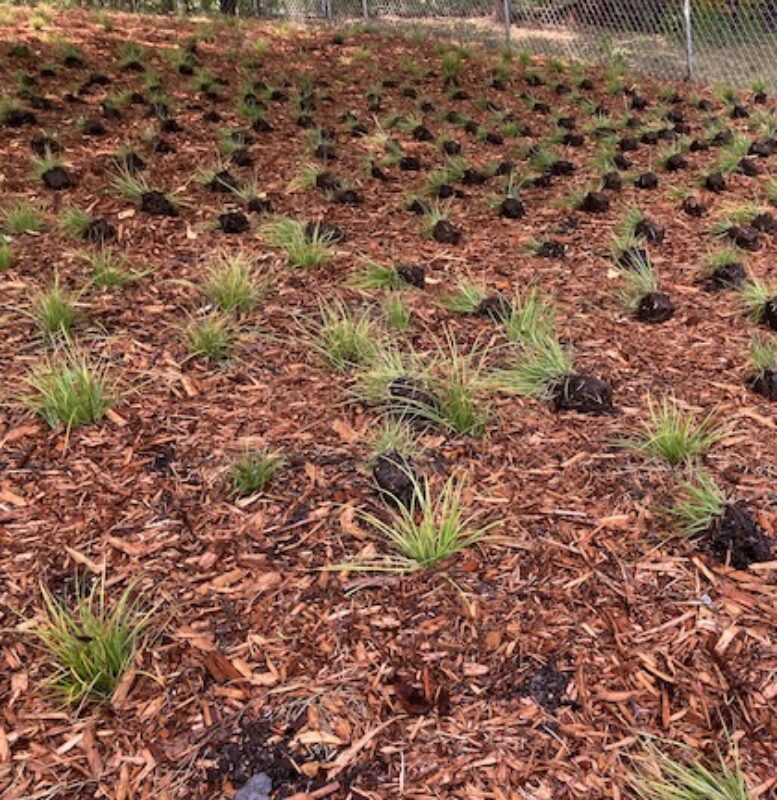
Pennsylvania sedge Carex pensylvanica. Penn sedge is a light green mop of foliage that looks like angel-hair-pasta. This is the best choice for full shade to dappled sun in a dry urban yard. Plant as transplants or small plugs, since starting from seed yields disappointing results. Penn Sedge is ideal for mass planting and controlling erosion in the shade that won’t spread aggressively. [At Pierson, we included 1620 Penn sedge plants in a large erosion control project! Read more about it.]
Canada violet Viola canadensis. Canada violets form a spreading mass of green leaves in spring topped with little face-like white blossoms. This an excellent choice if you want an aggressive spreader in dense shade. They will spread into neighboring areas if not well-contained and managed. Deer eat the leaves and blooms. Several Viola species can be started from either seed or plants and are widely available on the native market. Also, note that other Violas are not as adaptable to full shade.
Planting at the edge of a maple’s canopy
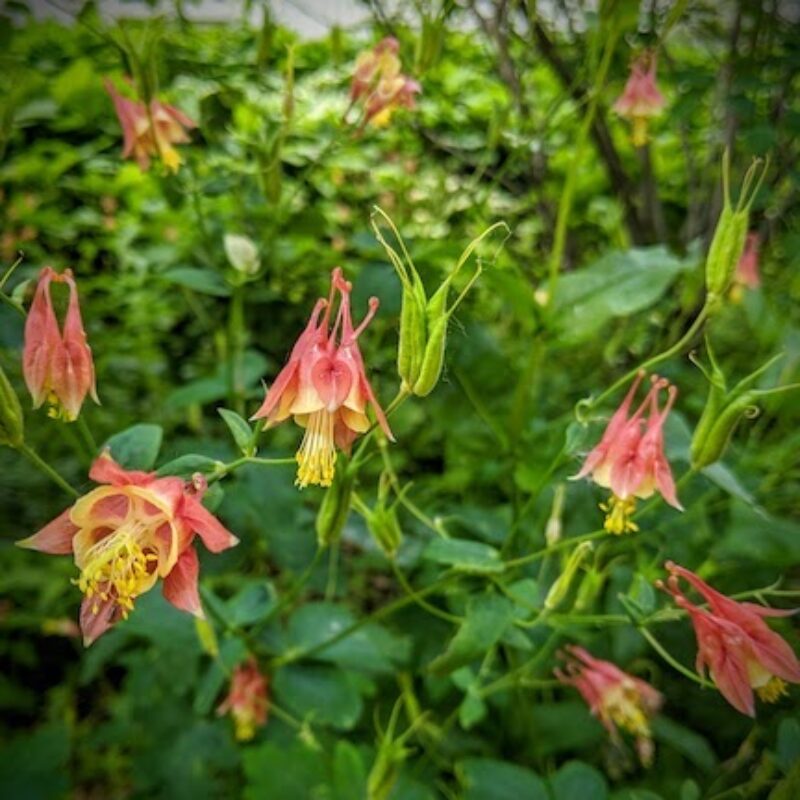
Columbine Aquilegia canadensis. Wild columbine emerges early in the growing season and forms intricate red blossoms that resemble hanging Chinese lanterns. This is a good choice for planting by maples. The survival rate is lower when planted directly under a mature maple’s canopy, though it grows well in the dry soil at the edge of a tree. It is common to see the first group of pollinators going nuts for columbine flowers!
Solomon’s seal Polygonatum biflorum. Solomon’s seal adds both height and drama to the shade garden, growing in a tall arching manner with bell-like flowers that form under the stem. Because the roots are rhizomes, they can compete in the same soil as fibrous tree roots. This grows well planted at the edge of a maple’s canopy. Planting directly under the canopy yields mixed results. Variegated-leaf (non-native plants) are also widely available for an added bi-color interest.
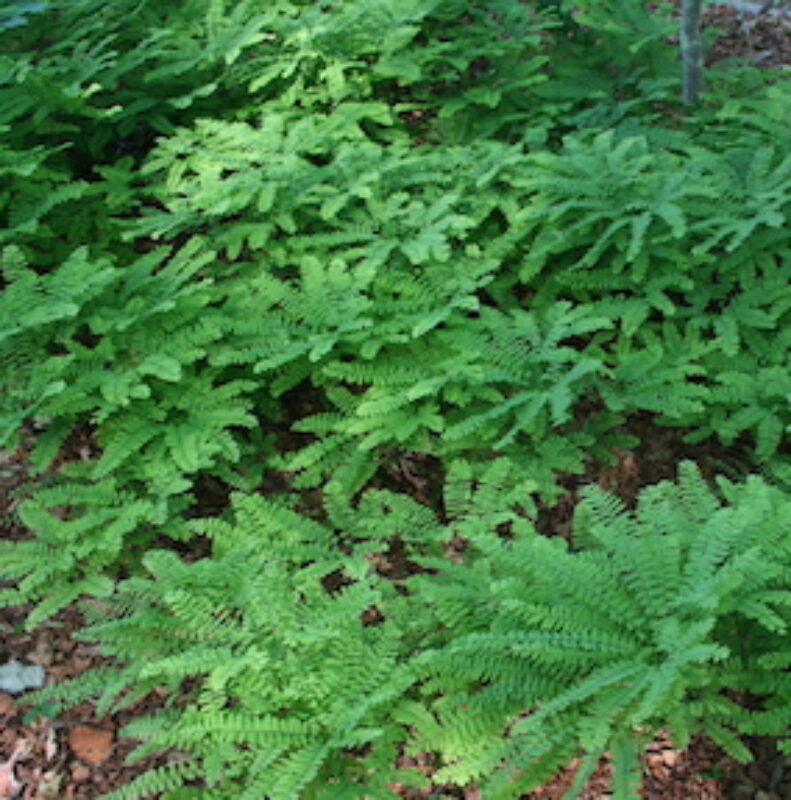
Ferns of many varieties grow well under a maple. It is important to note that despite the wide variety, ferns are descendants of the tropics, a hot and wet environment. When planted in a dry environment they tend to grow smaller and spread slower, so it is ideal to plant most ferns in a moist and warm location for optimal performance. Ferns such as the ostrich fern, lady fern, and maidenhair fern, can survive in the dense shade of a maple. This is because ferns grow quickly during the moist spring and before trees completely leaf out. They can be nearly full grown by the time the dense tree canopy fills in and starves them of light and rain. (Please note, too, that ostrich fern spreads very aggressively, so take care.)
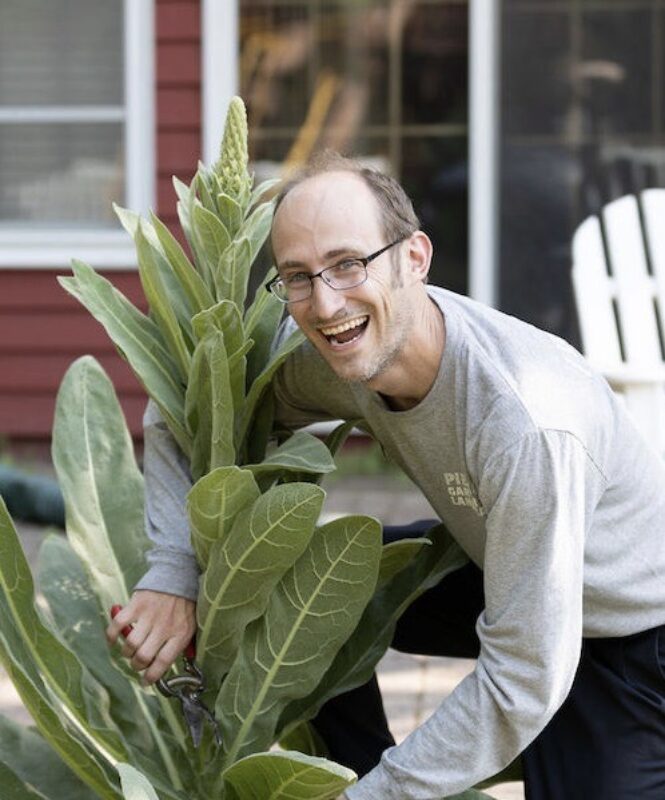 David Pierson, of Pierson Garden and Landscape, is a horticulturist and native plant enthusiast
David Pierson, of Pierson Garden and Landscape, is a horticulturist and native plant enthusiast
